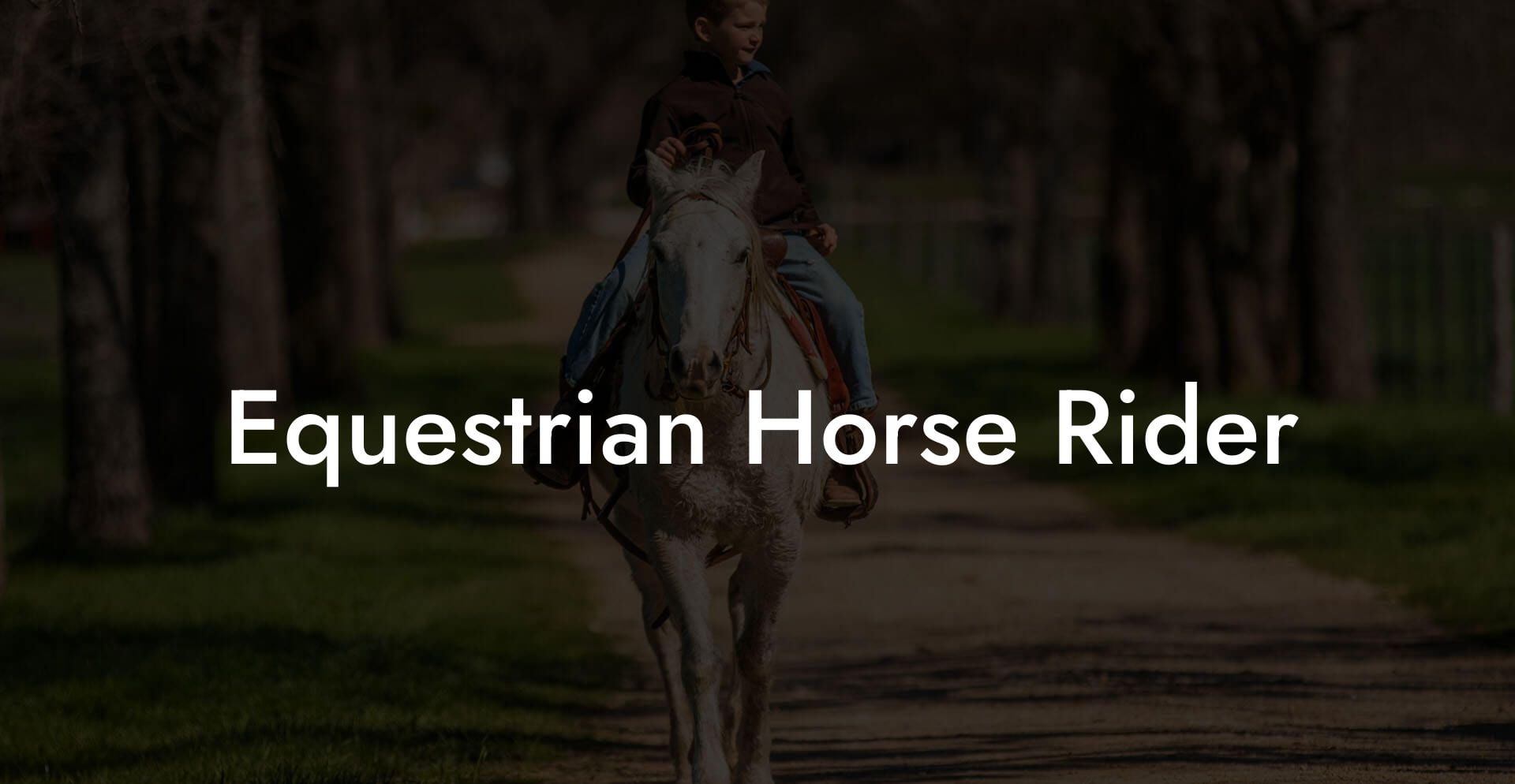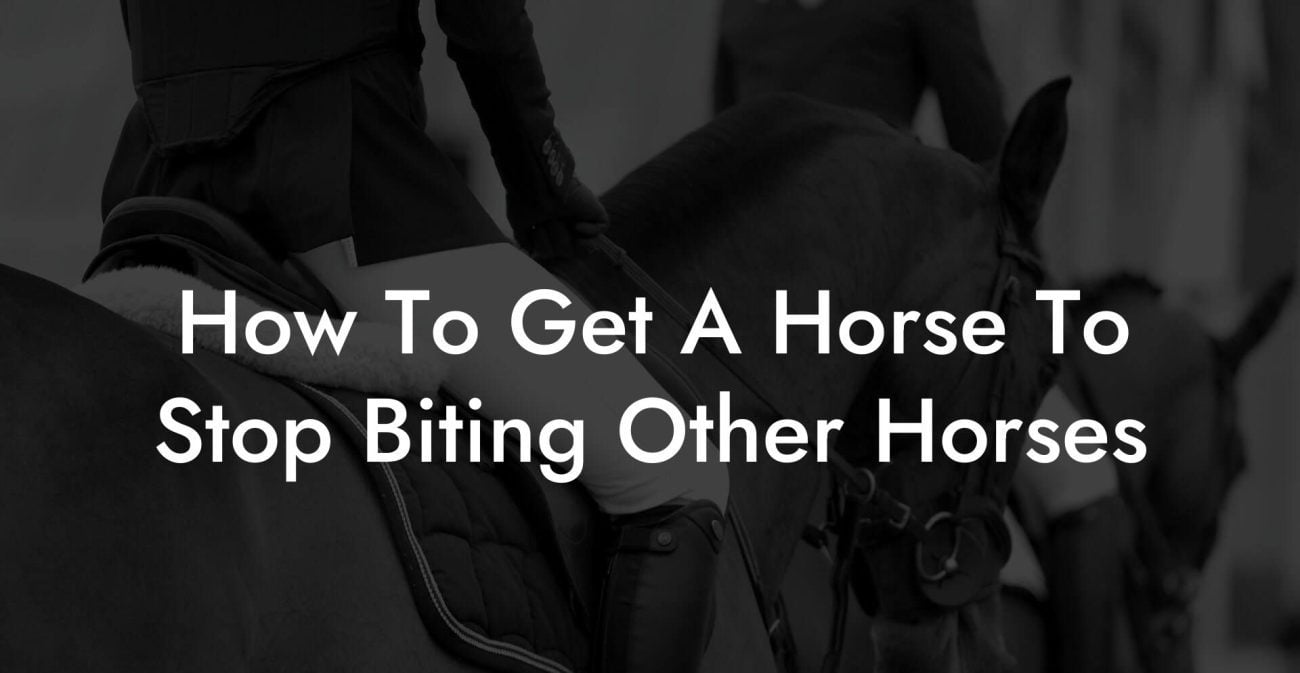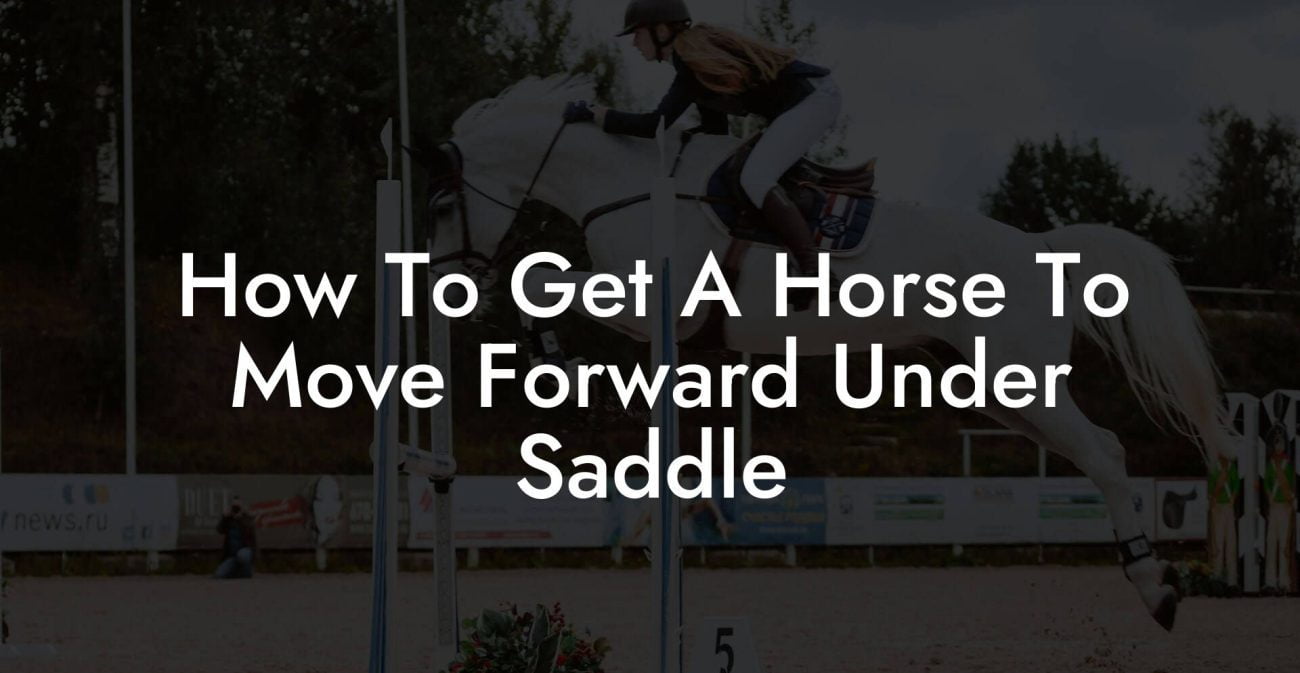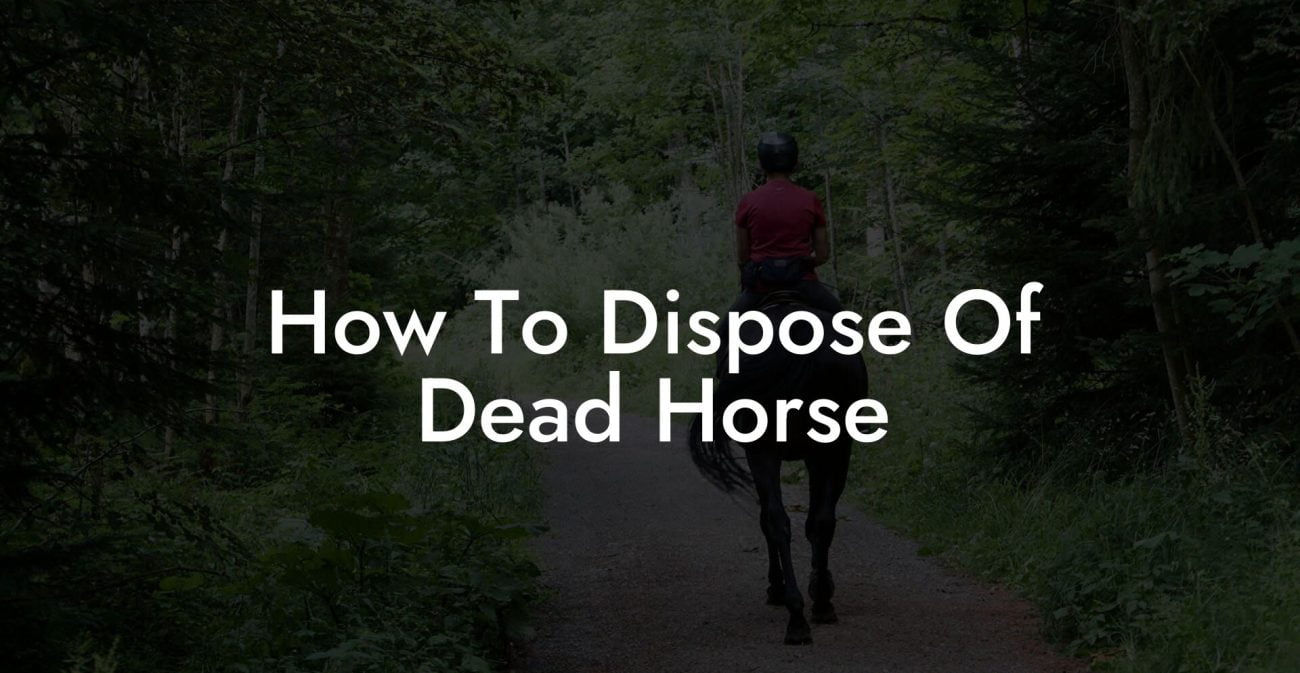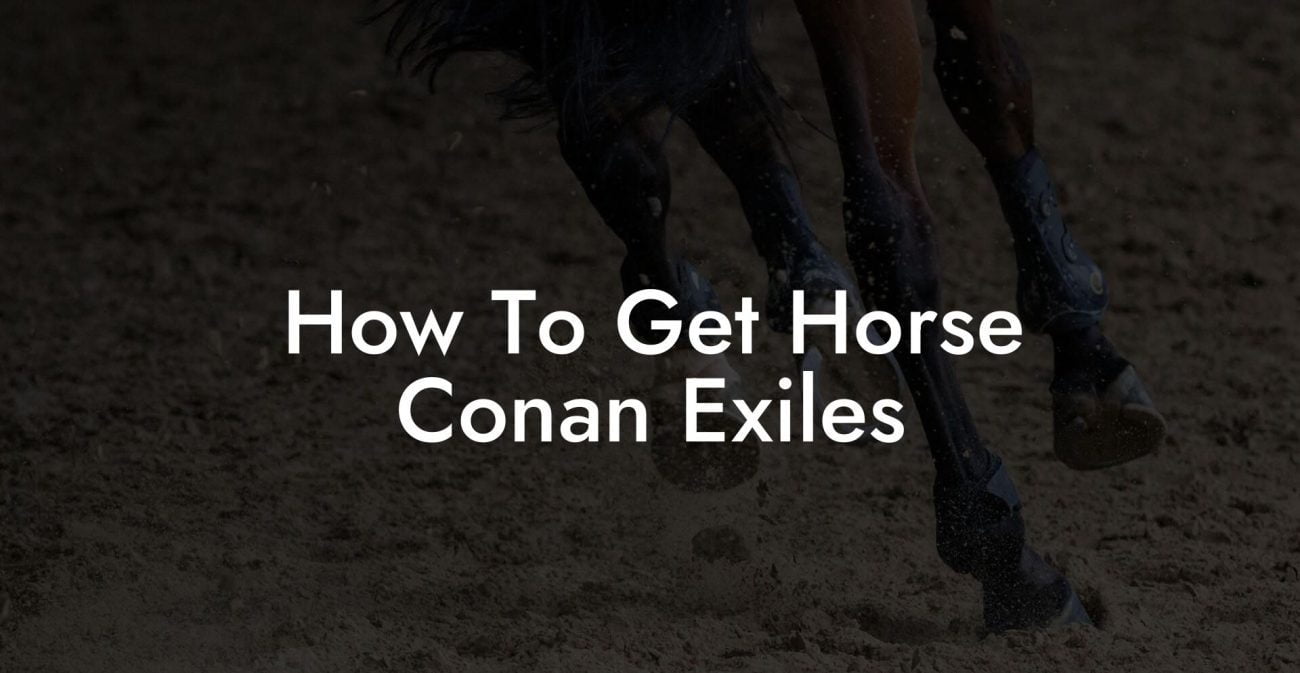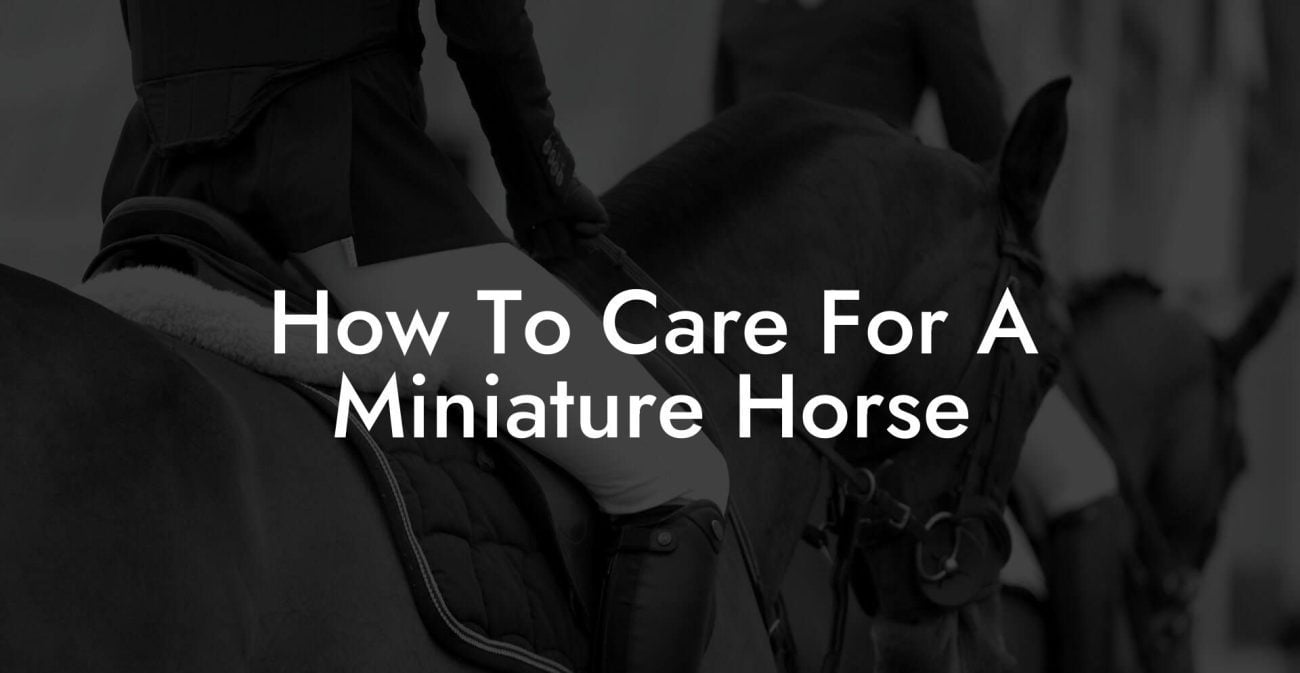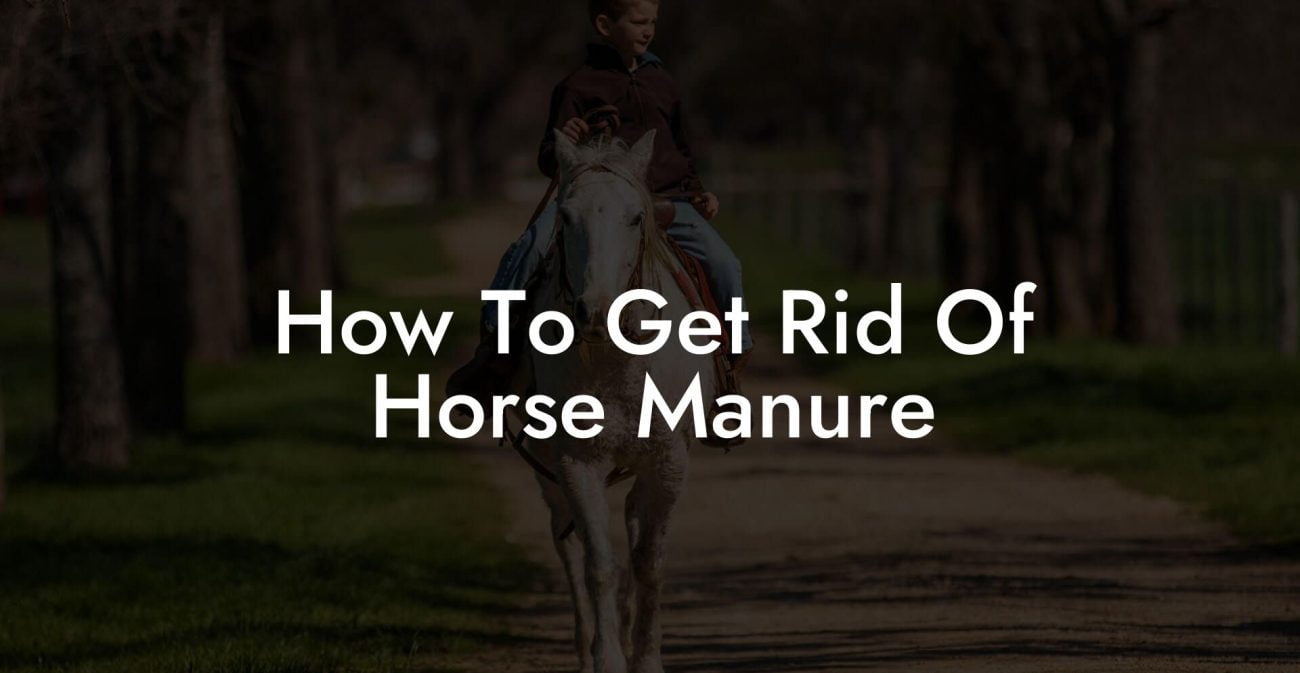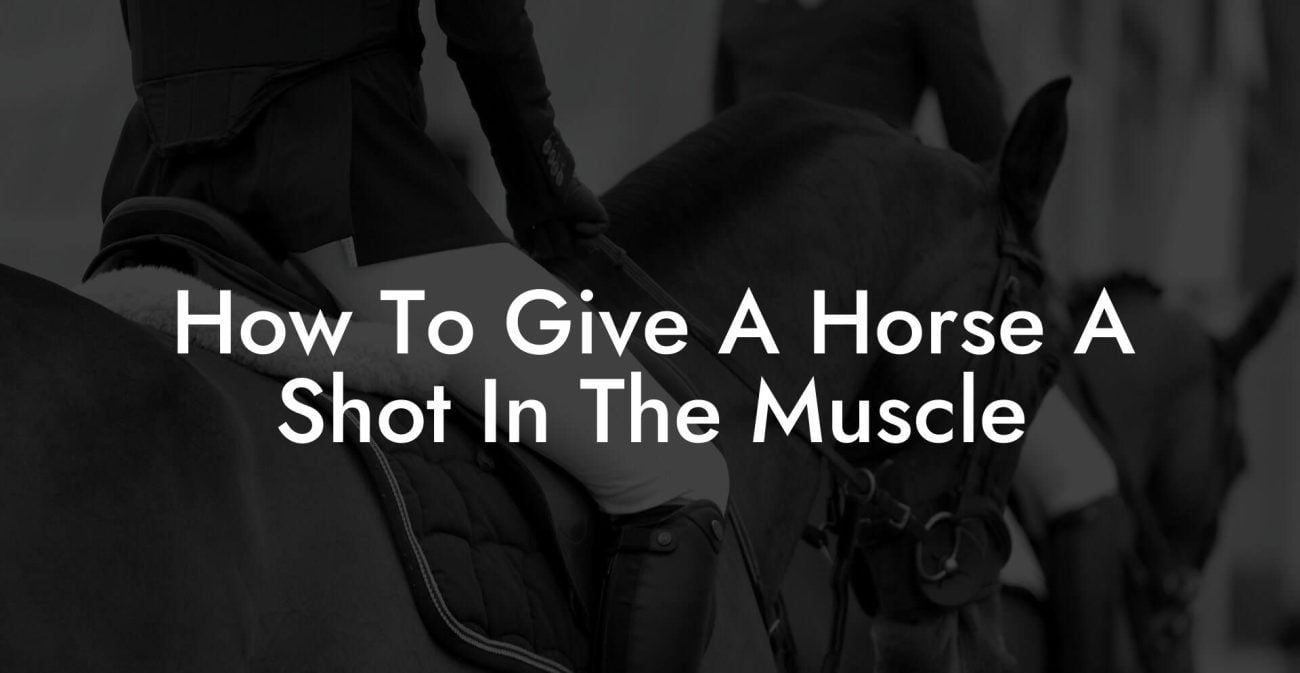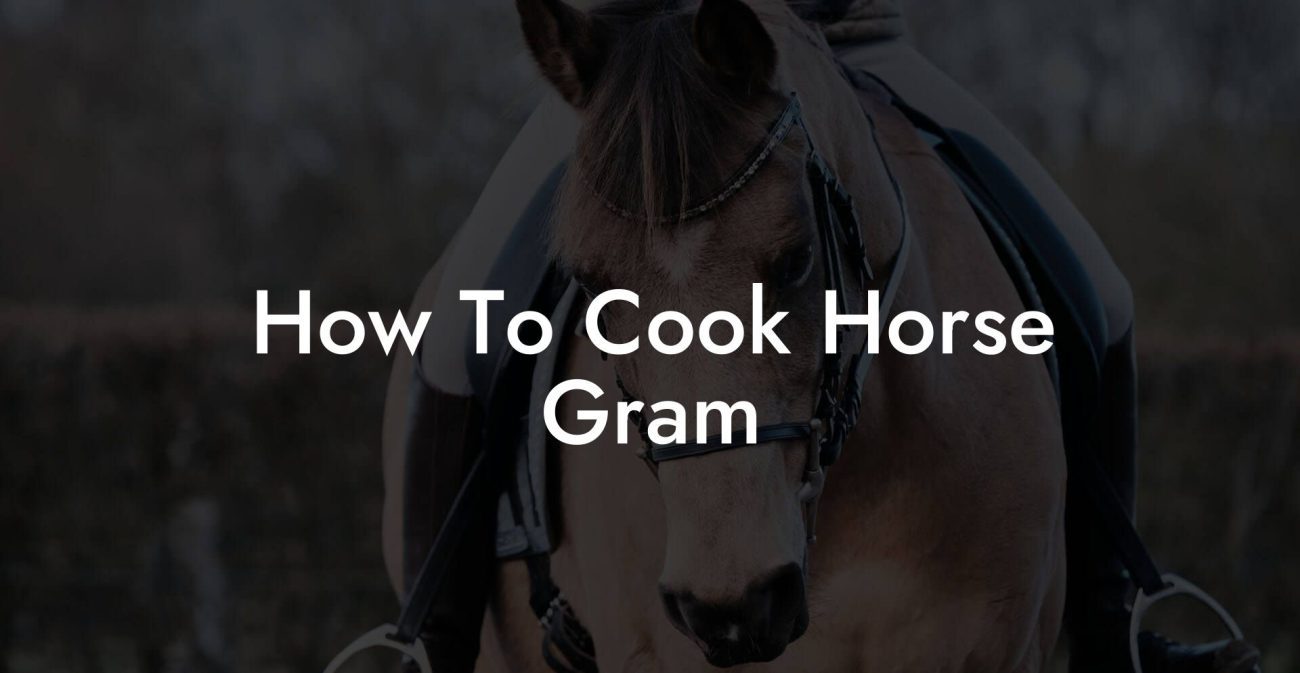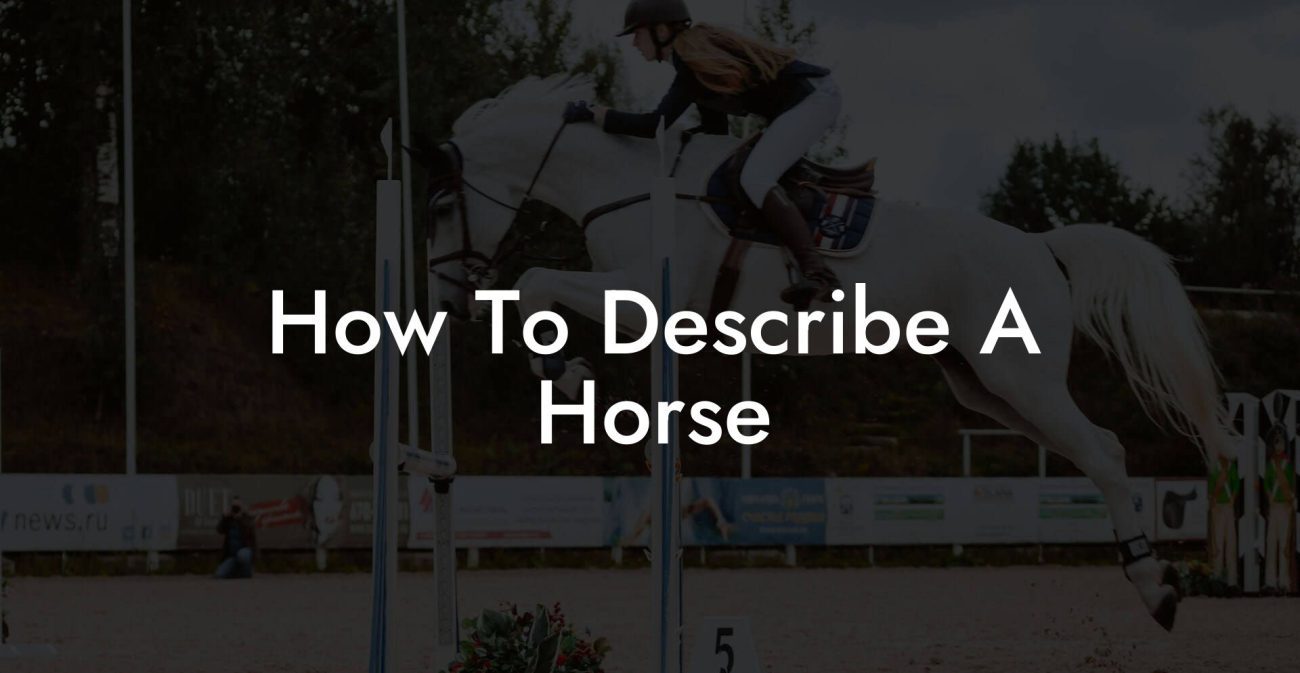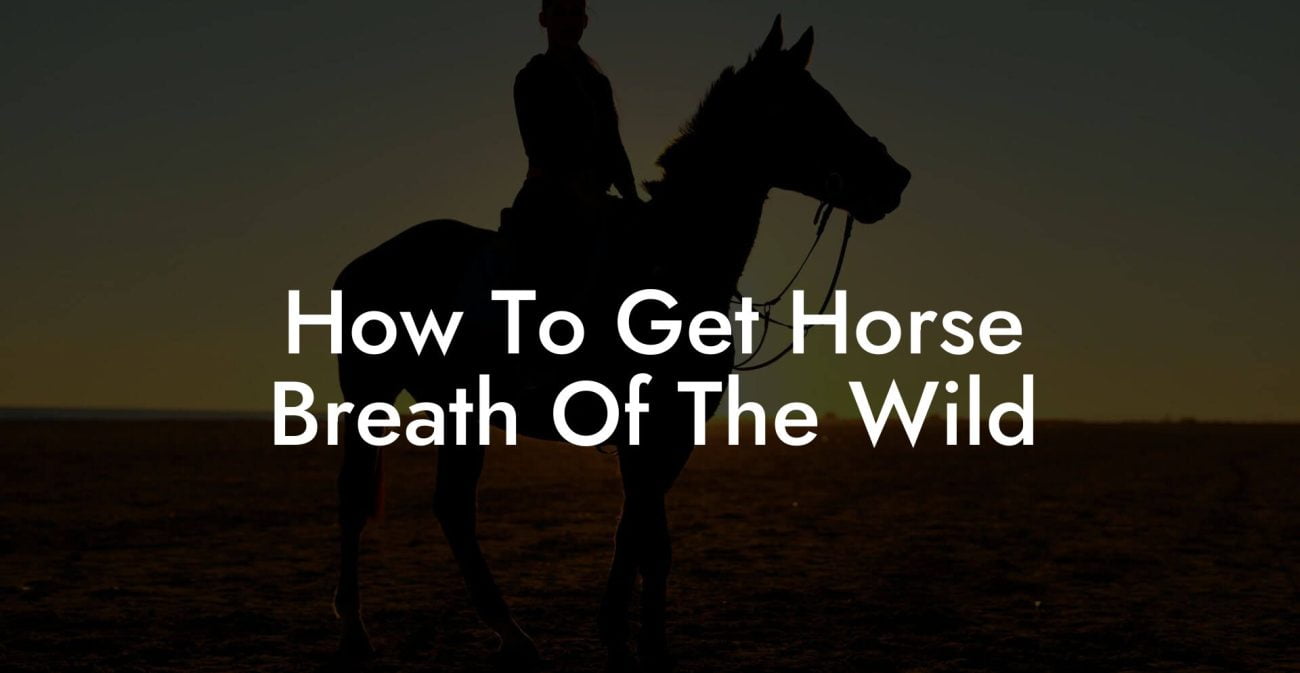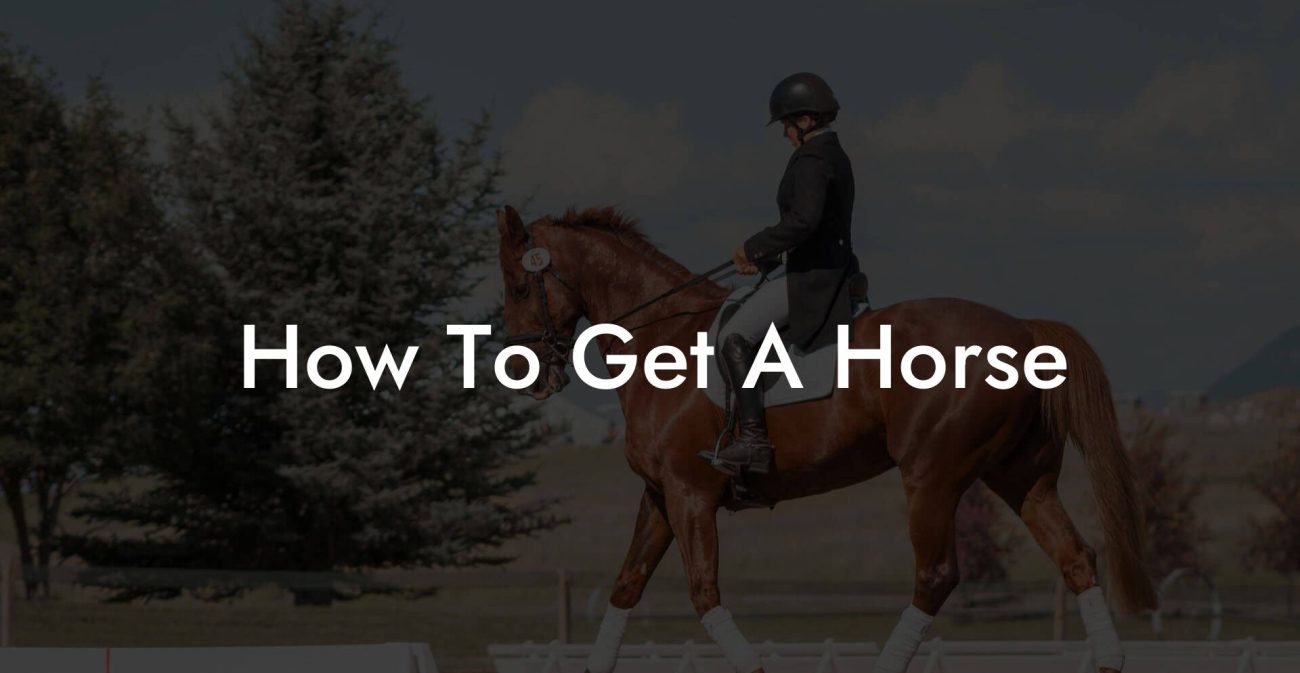riding isn't just about saddling up and hitting the trails, it's an art, a lifestyle, and a deep connection with a magnificent creature that's equal parts wild spirit and best friend. Whether you're a seasoned equestrian or a Gen-Z newbie curious about horse care and riding thrills, this comprehensive guide uncovers every aspect of being an empowered Equestrian Horse Rider. Buckle up (or rather, strap on your saddle), because we’re diving into the ins and outs of equine wellness, grooming, nutrition, training, and even the mind-body connection between you and your horse.
Quick Links to Useful Sections
- The Equestrian Lifestyle: Beyond Just Riding
- Understanding Horse Behavior: The Heartbeat of Equestrian Bonding
- Essential Horse Care: Nurturing Your Equine Partner
- stable Management
- Feeding and Nutrition
- Health Check-Ups and Preventative Care
- Grooming and Maintenance: Elevating Your Horse’s Shine
- Daily Grooming Essentials
- Deep Cleaning and Spa-Like Treatments
- Training and Riding Techniques: Mastering the Saddle
- Fundamental Riding Techniques
- Advanced Training Techniques
- Safety, equipment, and Gear: Suiting Up the Right Way
- Essential Equipment for Every Rider
- Technology and Gadgets in the Equestrian World
- Mind and Body: The Zen of Being an Equestrian
- Mindfulness in the Saddle
- Balancing Your Energy Off the Saddle
- Case Studies: Real-Life Transformations in the Equestrian World
- Case Study 1: From Hobbyist to Equestrian Influencer
- Case Study 2: Healing Through Horsemanship
- Case Study 3: Bridging the Generation Gap in Equestrian Sports
- Building Your Personalized Equine Care and Riding Plan
- Step 1: Knowledge Is Your Best Accessory
- Step 2: Set Achievable, Trendy Goals
- Step 3: Integrate Diverse Modalities
- Step 4: Create an Adaptable Schedule
- Step 5: Monitor, Adjust, and Evolve
- Resources and Community Support: Your Next Steps
- Equestrian Horse Rider FAQs: Your Questions Answered
- Your Journey to Empowered Equestrian Mastery
The Equestrian Lifestyle: Beyond Just Riding
The equestrian lifestyle is a unique blend of tradition, passion, and modern trends. Today’s riders are as likely to be influencers and content creators as they are competitors and care gurus. The horse isn't just an animal; it’s a partner, a confidante, and sometimes a mirror reflecting our own strengths and vulnerabilities.
Embracing this lifestyle means diving headfirst into horse care, understanding equine behavior, mastering various riding techniques, and learning the therapeutic benefits these majestic animals offer. In this journey, you'll learn about everything from choosing the right horse to creating a balanced routine that caters to both your and your horse's needs.
For many Gen-Z and millennial riders, horses are more than a hobby. They represent freedom and resilience, a way to unplug from digital overload and reconnect with nature, authenticity, and self-care.
Understanding Horse Behavior: The Heartbeat of Equestrian Bonding
Before you even think about mastering dressage or jumping courses, understanding the language of horses is paramount. These expressive creatures communicate through subtle body language, ear movements, and even the tilt of their heads.
The basics of horse behavior include:
- Body Language: A relaxed horse will carry its head high with soft eyes and ears pointed forward, whereas a stressed horse might pin its ears back and display rigid body posture.
- Vocal Cues: Horses communicate with soft nickers or snorts. Learning what these sounds mean can offer great insight into their current mood and needs.
- Social Interactions: Horses are herd animals. Understanding their social dynamics, dominance, submission, and bonding, helps you establish a respectful and trusting relationship.
Appreciating these nuances is crucial. Think of it as learning the ultimate TikTok dance challenge. Master the moves, know the cues, and you’ll be in sync with your horse in no time!
Essential Horse Care: Nurturing Your Equine Partner
At the core of every thriving equestrian relationship is proper horse care. This pillar of horsemanship ensures that your four-legged friend is not only physically healthy but also emotionally balanced.
stable Management
A clean, safe, and well-maintained stable is the foundation of equine health. Regular mucking out, ensuring proper ventilation, and maintaining secure fencing are all critical to preventing injuries and diseases. A good stable environment provides:
- Protection from the Elements: Sturdy shelter protects your horse from extreme temperatures and inclement weather.
- Hygiene and Health: Clean living quarters reduce the risk of infections and promote overall well-being.
- Peace of Mind: Knowing that your horse has a secure environment is a cornerstone of responsible equestrian management.
Feeding and Nutrition
Horses are grazers by nature, and their diets should mirror this behavior. A balanced diet for a horse includes:
- Forage: High-quality hay or pasture is vital, offering the roughage necessary for proper digestion.
- Grains and Supplements: Depending on the horse’s level of activity and health, grains and specially formulated supplements can provide the extra energy needed for performance.
- Hydration: Fresh, clean water should always be available. Dehydration is a hidden enemy in the barn, potentially leading to colic and other serious conditions.
Remember: Every horse is a unique athlete, and their nutritional needs might vary based on age, breed, workload, and personal preferences. Consult with an equine nutritionist to tailor a plan that truly complements your horse's lifestyle.
Health Check-Ups and Preventative Care
Just like us, horses also need a regular health check-up routine. This includes:
- Vaccinations and Deworming: Sticking to a schedule offered by your veterinarian can stave off infections and parasitic infestations.
- Dental Care: Routine dental examinations help prevent pain, improve eating habits, and even enhance performance.
- Hoof Care: Regular trimming and, if needed, proper shoeing are essential to avoid lameness and other hoof-related issues.
A proactive approach to health care not only extends your horse’s active life but also strengthens the bond you share, as a healthy horse is always a happy, more responsive partner.
Grooming and Maintenance: Elevating Your Horse’s Shine
Grooming isn’t just a chore, it’s a ritual that deepens your connection with your horse while keeping them in top-notch condition. For Gen-Z and millennial riders who crave authenticity and mindfulness, grooming sessions can be a meditative, almost zen-like practice.
Daily Grooming Essentials
A consistent grooming routine may include:
- Brushing: Use a soft-bristled brush for the body and a firmer one for the mane and tail. Regular brushing helps distribute natural oils, reduces shedding, and promotes a healthy coat.
- Hoof Pick: Cleaning the hooves daily prevents dirt and debris from accumulating, reducing the risk of infections and injuries.
- Checking for Injuries: A quick once-over can catch small cuts, abrasions, or signs of discomfort before they become significant issues.
Deep Cleaning and Spa-Like Treatments
Occasionally, your horse might need a more intensive groom:
- Bathing: While horses don’t need frequent baths, periodic washing with horse-safe shampoo can help remove stubborn dirt and allergens.
- Conditioning Treatments: Special conditioners can rejuvenate a tired coat and even soothe irritated skin during warmer months.
- Massage Therapy: Yes, horses can enjoy therapeutic massages too! Regular massages improve circulation, ease muscle tension, and enhance overall well-being.
Integrating these grooming practices into your routine ensures your horse not only looks their best but also enjoys the health benefits that come from proper maintenance.
Training and Riding Techniques: Mastering the Saddle
Riding is a dynamic blend of strategy, finesse, and trust. Whether you prefer the adrenaline rush of show jumping or the rhythmic elegance of dressage, effective training is the key to building a powerful partnership with your horse.
Fundamental Riding Techniques
Here are some core techniques every rider should know:
- Balance and Posture: A relaxed, centered posture is essential for effective riding. It enables smooth transitions and minimizes strain on both you and your horse.
- Communication: Use clear, consistent cues, both physical and verbal, to signal your horse. Remember, subtle shifts in weight or a gentle squeeze can be more effective than harsh commands.
- Core Strength: Just as in human fitness, a powerful core improves your stability. Engage in exercises like Pilates or yoga to enhance balance and endurance in the saddle.
Advanced Training Techniques
As you progress, consider integrating these advanced strategies:
- Groundwork: Before riding, invest time in groundwork exercises. This increases mutual trust and helps establish your role as the leader of the pack, even if your horse is the real boss.
- Obstacle Courses: Set up drills that challenge your horse’s agility and improve your coordination. Obstacles can range from simple cones to elaborate jumping sequences.
- Trail Riding Etiquette: Navigate diverse terrains and unpredictable environments with confidence by practicing good trail riding etiquette, including proper signaling and respect for fellow riders and nature.
These training techniques are designed to be flexible and adaptable. Whether you're training for competitive events or simply riding for leisure, they ensure a balanced, respectful, and effective riding experience.
Safety, equipment, and Gear: Suiting Up the Right Way
No matter how in sync you are with your horse, safety and proper equipment are non-negotiable. The last thing you want is for a misplaced stirrup to ruin your ride (or your day).
Essential Equipment for Every Rider
An effective equestrian toolkit includes:
- Saddle and Bridle: Invest in quality, well-fitted equipment that suits your riding style and your horse’s morphology. A proper saddle not only ensures comfort but also prevents long-term injuries.
- Helmet and Protective Gear: Safety first! Modern helmets are designed not only for protection but for style and comfort. Additionally, consider protective vests, especially if you’re tackling high-intensity riding or jumps.
- Riding Apparel: Functional yet fashionable attire, from breeches to moisture-wicking tops, ensures you remain cool, agile, and Instagram-ready, both in and out of the saddle.
Technology and Gadgets in the Equestrian World
The equestrian scene has embraced high-tech solutions:
- Wearable Devices: Smart devices can keep tabs on your horse’s vital signs and track your riding performance in real time.
- Mobile Apps: From training logs to nutrition trackers, innovative apps are making horse care and performance analysis more accessible than ever.
- Online Communities and Forums: Join digital groups where enthusiasts and professionals exchange tips, troubleshoot issues, and post epic riding stories.
Being equipped means being empowered. When both you and your horse are outfitted with the right gear, you maximize safety and elevate your overall riding experience.
Mind and Body: The Zen of Being an Equestrian
It’s not just coffee that fuels your day, it's a deep-rooted passion for the art of riding. Equestrian life is as much about mental focus and stress relief as it is about physical activity. Studies show that time spent with horses can reduce stress hormones and foster a sense of well-being.
Mindfulness in the Saddle
Mindfulness isn’t reserved for meditation cushions, it’s right there in the saddle. When you ride, you're invited into a state of flow where external stressors vanish into the background, leaving just you and your horse on a shared journey.
Techniques to embrace mindfulness while riding include:
- Focused Breathing: Sync your breath with the movement of your horse to achieve a meditative rhythm.
- Intentional Presence: Instead of spiraling down an endless TikTok scroll, take in your surroundings. Notice the gentle sway of the grass, the sound of hooves, and the bond forming through each stride.
Balancing Your Energy Off the Saddle
Riding can be exhilarating, but balancing that adrenaline with intentional downtime is crucial. Engage in cross-training activities like yoga, jogging, or even a creative art pursuit that reconnects you with your inner self.
This balanced approach not only refines your riding but also informs your everyday life, fostering a healthier, more centered mindset in all that you do.
Case Studies: Real-Life Transformations in the Equestrian World
To truly appreciate the transformative power of authentic equestrian life, let’s explore some real-life stories from riders who’ve redefined their boundaries:
Case Study 1: From Hobbyist to Equestrian Influencer
Mia, a 24-year-old social media maven, started as an amateur rider with a love for horses and a talent for storytelling. Documenting her daily challenges and triumphs, from balancing school, part-time gigs, and hectic training schedules, Mia quickly amassed a loyal following. By emphasizing transparency in horse care, riding techniques, and even the occasional grooming mishap, she created a relatable narrative that inspired many to take up riding. Today, Mia's equestrian journey is celebrated as much for her riding skills as for her innovative blend of wellness, fashion, and lifestyle content.
Case Study 2: Healing Through Horsemanship
For James, a 32-year-old millennial recovering from burnout and stress, the answer was simple: dive into the equestrian world. He began with leisurely trail rides which gradually transformed into an intense commitment to horse care and training. Through daily interactions, feeding, grooming, and careful training, James discovered that his connection with his horse was the ultimate form of therapy. Over time, not only did his mental health flourish, but his riding prowess also reached new heights, proving that the equine bond extends well beyond the stable.
Case Study 3: Bridging the Generation Gap in Equestrian Sports
Lena, at just 19 years old, was initially overwhelmed by the traditional, often intimidating world of horse riding. Determined to challenge the status quo, she brought a fresh, digital-savvy perspective to equestrian sports. By leveraging social media, attending modern clinics, and exploring innovative training techniques, Lena bridged the generational gap. Her journey is a testament to how modern technology paired with timeless horse care practices can create a resilient and dynamic equestrian identity, one that's as much about personal growth as it is about riding.
These case studies highlight that regardless of your starting point, whether you're a social media superstar or someone seeking solace in the simplicity of nature, the equestrian lifestyle has something extraordinary to offer.
Building Your Personalized Equine Care and Riding Plan
Much like tailoring the perfect Instagram aesthetic, crafting your equine care plan is a process of understanding, personalization, and evolution. Here’s how you can begin to design a plan that caters to the needs of both you and your horse:
Step 1: Knowledge Is Your Best Accessory
Start by diving deep into research, read up on equine care guides, partake in community discussions, and follow veteran riders on platforms like Instagram and TikTok. The more you know, the more empowered you become.
Step 2: Set Achievable, Trendy Goals
Define clear, attainable goals for your equine partnership. Whether it's mastering a new riding technique, achieving a healthier coat for your horse, or simply establishing a more consistent grooming routine, setting milestones keeps the journey exciting and metric-driven.
Step 3: Integrate Diverse Modalities
Embrace integrated care by combining:
- Daily Grooming and Health Checks: Regular stable maintenance, proper feeding, and timely veterinary visits ensure a sound foundation.
- Physical Training: Structured riding sessions along with supplemental exercises (like yoga or Pilates) help improve your balance and your horse’s agility.
- Modern Techniques: Utilize technology, like wearable trackers, to monitor your horse's performance and health metrics in real-time.
- Mind-Body Practices: Incorporate mindfulness and stress management both on and off the saddle, ensuring you and your horse are operating in sync.
Step 4: Create an Adaptable Schedule
Establish a routine that accommodates grooming, training, and downtime. Use digital calendars, set reminders, or even join local riding groups for scheduled meet-ups. Consistency is key, build routines that are as reliable as your favorite playlist.
Step 5: Monitor, Adjust, and Evolve
Keep a detailed journal or blog tracking progress and challenges. Monitor your horse’s reactions and your own growth. Use this ongoing feedback to tweak your plan, ensuring it flexes with your evolving equestrian journey.
Remember, a personalized equine care plan is a living document, one that grows and adapts alongside the dynamic relationship you share with your horse.
Resources and Community Support: Your Next Steps
In the vibrant world of equestrian sports, you are never truly alone. Countless online communities, local clubs, and expert forums are at your fingertips. Whether you’re seeking advice on optimal nutrition for your horse, the latest in riding trends, or simply a supportive network to share your progress with, there’s a place for you.
Start by exploring these resources:
- Social Media Groups: Platforms like Instagram, TikTok, and Facebook host dedicated equestrian communities where enthusiasts share tips, success stories, and even the occasional funny fail.
- Online Equestrian Forums: Sites like The Horse Forum or Reddit’s r/equestrian offer an interactive space to ask questions and receive advice from seasoned professionals.
- Local Riding Clubs: Nothing beats in-person camaraderie. Join a local club or take part in clinics and workshops to build tangible connections and receive hands-on guidance.
- Educational Webinars and Podcasts: Keep up with the latest trends and research through digital media. From veterinary wellness tips to advanced riding techniques, there’s a wealth of knowledge waiting for you.
Embracing community support not only boosts your skills and knowledge but also connects you with like-minded souls, each one sharing the burning passion to ride, explore, and lead with compassion.
Equestrian Horse Rider FAQs: Your Questions Answered
Here are some frequently asked questions that dive into common queries about equestrian care and riding, tailored for savvy, modern riders:
1. What does it mean to be an “Equestrian Horse Rider” in today's world?
It means embracing not just the thrill of riding, but also a comprehensive lifestyle that includes proper horse care, advanced training techniques, and a deep understanding of your horse’s unique personality and needs.
2. How do I choose the right horse if I’m a beginner?
Look for a calm, well-trained horse known for its gentle temperament and reliability. Consult experts, attend local shows, or seek recommendations from established riding clubs.
3. What essential gear should I invest in as a modern rider?
Quality riding boots, a well-fitting helmet, a comfortable saddle, and modern equestrian apparel that marries style with functionality are must-haves. Don’t forget safety gadgets like wearable trackers for your horse!
4. How important is routine grooming to a horse’s health?
Extremely important. Regular grooming not only keeps your horse looking great but is vital for identifying potential health issues early and maintaining their overall coat and hoof health.
5. Can equestrian sports really help with stress relief?
Absolutely. The mind-body connection you build with your horse can serve as a powerful antidote to modern stress, bringing you into a state of mindfulness and balance.
6. How can modern technology enhance my riding experience?
From GPS tracking on trail rides to wearable health monitors for your horse, modern technology offers real-time insights that help optimize training and care routines.
7. What role does nutrition play in maintaining a healthy horse?
Nutrition is the cornerstone of equine health. A balanced diet, rich in quality forage, tailored supplements, and adequate hydration, is essential for sustained health and performance.
8. Are there holistic approaches to both horse care and rider wellness?
Yes, many riders incorporate mindfulness, yoga, and stress reduction techniques into their routines, benefiting both horse and rider by fostering a harmonious mind-body connection.
9. How can I improve communication with my horse?
Learning to read body language and developing consistent cues, whether through grooming rituals or riding signals, can dramatically improve communication and trust.
10. Where can I find community support and further learning resources?
Online forums, local equestrian clubs, and digital media channels are brimming with resources that cater to every level of equestrian enthusiasm.
Your Journey to Empowered Equestrian Mastery
Embracing the role of an Equestrian Horse Rider is about more than just leaning into the saddle, it’s a lifestyle that celebrates connection, continuous learning, and boundless passion for a magnificent companion. With every grooming session, every training tip learned, and each mindful ride through nature’s playground, you’re not only building a steadfast bond with your horse but also cultivating personal resilience and authenticity.
Your equestrian journey is uniquely yours. It’s built on the rich traditions of the past, enriched by modern techniques and technology, and infused with the vibrant energy of today’s digital age. From deep dives into horse care and nutrition to the nuanced art of riding and mindfulness, every step you take is a step towards a more balanced, fulfilling, and adventurous life.
So snap a selfie with your four-legged friend, share your epic trail ride on Instagram, and never forget: the bond between rider and horse is the ultimate story of trust, freedom, and timeless connection. Step forward with confidence, experiment with innovative training methods, and let every ride reverberate as a celebration of your empowered spirit.
Your journey to equestrian mastery is a vibrant tapestry of challenges, triumphs, and ever-evolving growth. Embrace it, document it, and inspire others along the way. Because in the world of horse riding, every adventure is a chance to rewrite your story, one ride at a time.

